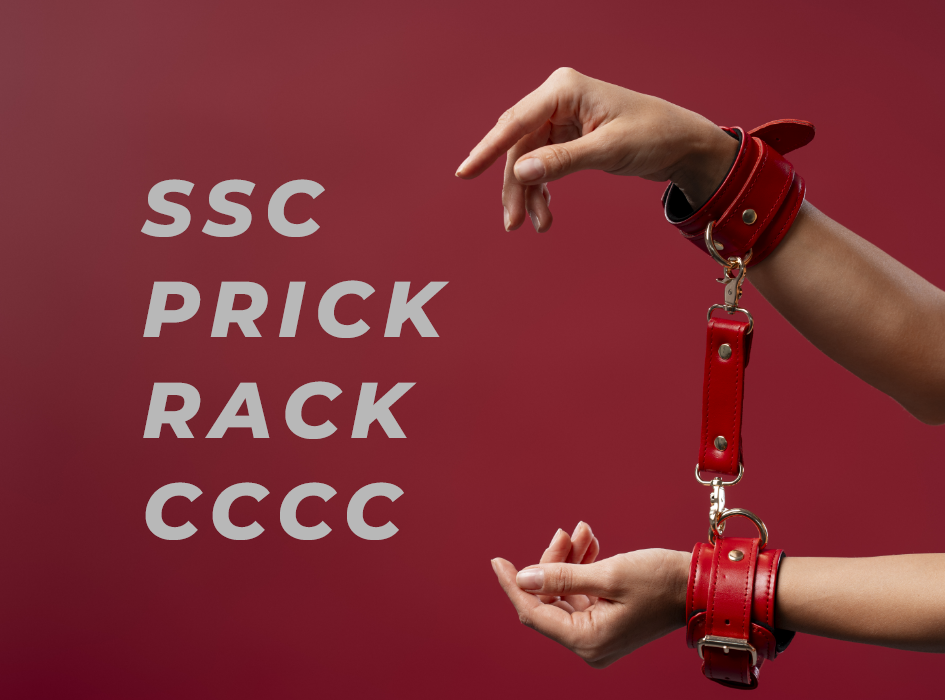Polyamory 101: The 4 Types of Non-Monogamous Relationships
Engaging with multiple romantic or sexual partners at the same time might sound complex, but it’s more common than people think. In the world of non-monogamy, people often assume there’s a right way and a wrong way to navigate polyamorous relationships. However, it’s important to remember that there’s no single "perfect" form of polyamory. Relationships are messy, and they can get tricky. That doesn’t mean anyone involved has made a mistake or that there’s one ideal way to do things.
In fact, what makes polyamory so beautiful is that it’s flexible and allows people to create their own versions of what love and connection look like. The key to successful polyamory is simply this: Whatever works for you and your partners is the right way.
Let's dive into four types of polyamory, or "shapes of non-monogamy," to help you understand the variety that exists in this relationship style.
1. Relationship Anarchy
In relationship anarchy, there are no fixed rules. People who practice relationship anarchy believe that love, romance, and connection don’t need to follow society’s traditional ideas. There’s no ranking of relationships, and everyone involved is seen as equal. In this kind of polyamory, you might have multiple partners, but none of them are considered more important than the others.
The beauty of relationship anarchy is the freedom it offers. You get to define your relationships without labels like “primary” or “secondary.” There’s no need to follow any one set of rules or structures. Everyone involved communicates openly and respects each other’s needs and boundaries. This style of polyamory is for people who love to go with the flow and don’t want to be boxed into rigid structures.
In simple words: You love who you love, without putting anyone in categories or following any rules that society expects. Freedom is key here!
2. Pancake Poly
The name pancake poly may sound a bit funny, but it’s all about balancing relationships like flipping pancakes. In this form of polyamory, people try to keep things as balanced and equal as possible between all their partners. Imagine you’re making pancakes—each one needs attention, time, and care. Similarly, in pancake poly, partners aim to spread their time and emotional energy evenly across their relationships.
This type of polyamory works well for people who want to avoid favoritism or feeling like they’re neglecting anyone. The focus is on making sure that every relationship gets the attention and effort it deserves.
However, just like pancakes, this balance can sometimes be tricky to achieve. It takes strong communication and honesty to make sure no one feels left out or neglected. If you’re someone who likes to organize your time and energy well, pancake poly might be a good fit.
In simple words: You try to give equal attention to all your partners, making sure no one feels neglected—just like flipping pancakes so they cook evenly.
3. With Whips and Chains
This type of polyamory brings BDSM (bondage, dominance, submission, sadomasochism) into the mix. In polyamorous BDSM relationships, power dynamics are often a big part of the structure. Some relationships may involve dominance and submission, while others may explore various kinks or fetishes.
In this dynamic, it’s important for everyone to clearly understand their roles and boundaries, especially since BDSM can involve a lot of trust and vulnerability. Communication is key to making sure everyone involved feels safe, respected, and cared for. The BDSM aspect adds an extra layer of complexity, but it also allows people to explore their fantasies and desires in a consensual, safe environment.
It’s important to note that not all BDSM relationships are polyamorous, but when the two combine, it creates a unique style of non-monogamy that focuses on both emotional and physical connection, often with structured power roles.
In simple words: In this type of polyamory, BDSM elements like power dynamics and kinks play a major role, and partners must communicate well to make sure everything is consensual and safe.
4. Unbalanced Poly
In unbalanced poly, there’s a clear imbalance in how much time, energy, or emotional effort is given to different partners. Maybe one partner is considered more important, while others are secondary or less involved. Some people call this a "hierarchical" structure, where the primary relationship is the focus, and the other relationships take a backseat.
For example, you might be married to one partner but have casual or less involved relationships with others. Or, one partner might get more time and energy because of circumstances like living together or having children.
This style works for people who like having a primary partner but also want the freedom to explore other relationships. The key to making unbalanced poly work is honesty. It’s important that everyone involved knows their place in the structure and agrees to it.
In simple words: One partner gets more attention or priority than others, and everyone understands and agrees with that.
All for One, One for All
Polyamory isn’t a one-size-fits-all approach to love or relationships. It’s about finding what works best for you and your partners. Whether you’re someone who wants equal attention for everyone, likes the freedom of no rules, or enjoys a primary relationship with casual partners on the side, the key is communication. Talk openly about what you want, how you feel, and what you need from your relationships.
At the end of the day, polyamory is about creating relationships that bring happiness to everyone involved. The shapes and structures may vary, but the core values remain the same: trust, honesty, and love.
In simple words: There’s no right or wrong way to do polyamory. The most important thing is that everyone involved is happy and feels respected.
Final Thoughts
Polyamory is a unique and flexible way of experiencing love and relationships. Whether you resonate with relationship anarchy, enjoy flipping pancakes to keep things balanced, incorporate BDSM into your love life, or have an unbalanced approach, the key is that it’s all about whatever works for you and your partners. There’s no "correct" way to be poly, just the way that brings you happiness.
Related posts
-
Acronyms of BDSM : A Look at SSC, RACK, PRICK and CCCC
BDSM acronyms have emerged and been debated over a time as away to protect BDSM......
-
Is It Common to Lose an Erection When Wearing a Condom?
Have you ever been ready to go, but lost your erection when putting on a......
-
Is the Idea of a Cuckquean Rooted in Myth or Real-life Practices?
A cuckquean is a woman whose husband is unfaithful, often with her knowledge and sometimes......


